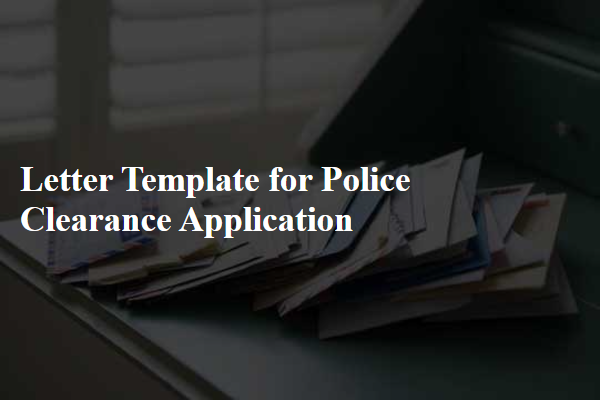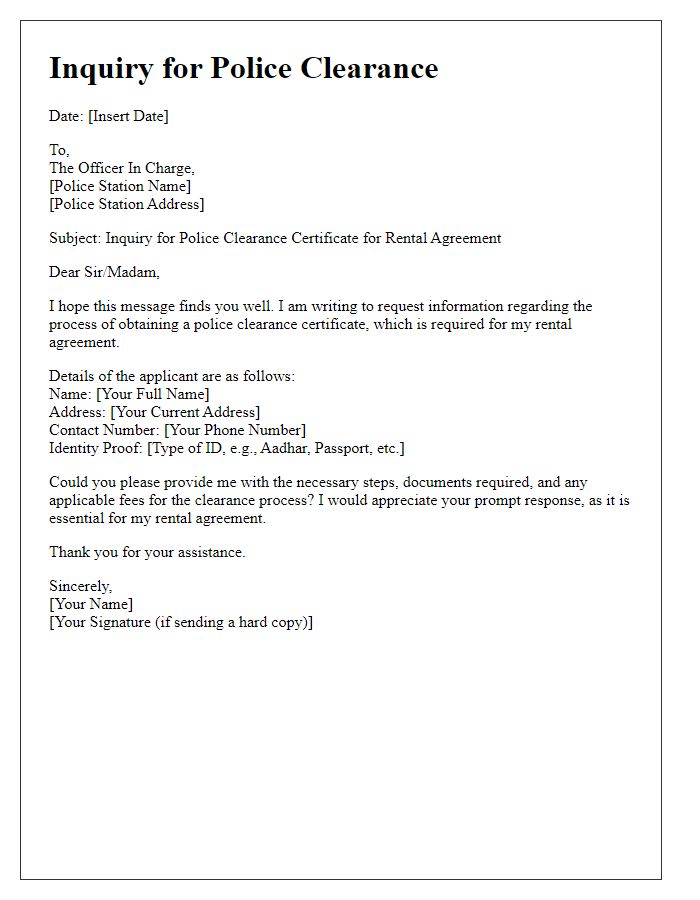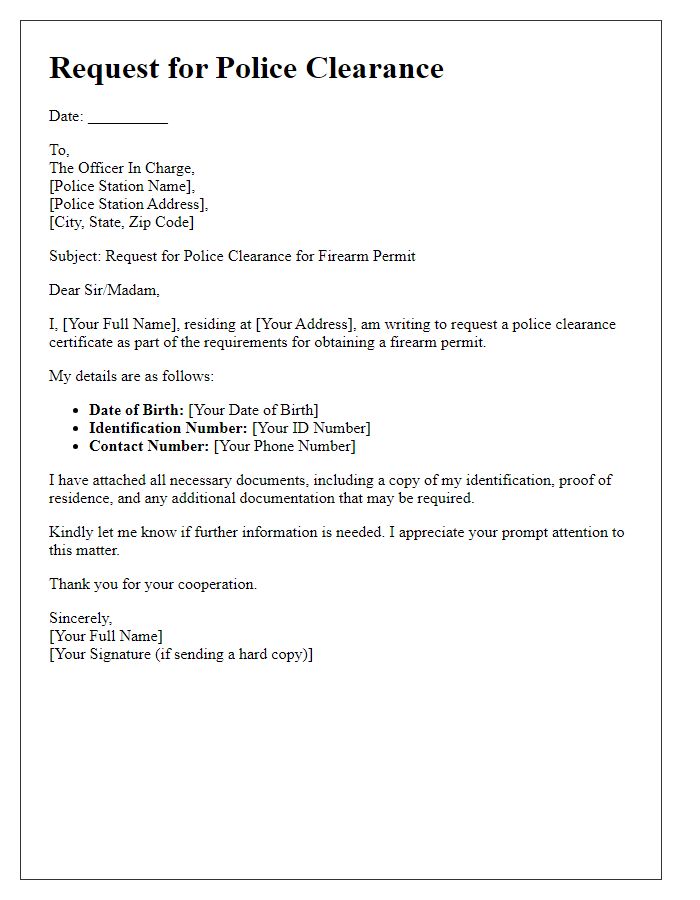Are you ready to navigate the essential steps of obtaining a police clearance? Whether you need it for a job application, visa processing, or personal assurance, understanding the process can save you time and effort. In this guide, we'll walk you through a sample letter template specifically tailored for requesting a police clearance. So, let's dive in and explore what you need to know!

Personal information inclusion
The application for police clearance requires detailed personal information to ensure accurate identification and processing. Applicants typically must provide full name, including any aliases or maiden names, date of birth, and place of birth, such as city and state. Additionally, applicants should include current residential address, previous addresses over the past five years, and contact information, which often includes a phone number and email address. Identification numbers, such as Social Security Number or national ID card number, may also be required for verification. In some instances, applicants must provide a recent photograph and fingerprints, depending on the police department's specific requirements.
Purpose of clearance
Police clearance certificates serve crucial purposes in various contexts, such as employment verification and legal proceedings. Individuals often require these certificates for job applications, particularly in fields like education, health care, or security, to demonstrate a clean criminal record. In international endeavors, such as visa applications or immigration processes, a police clearance helps to ensure compliance with country-specific regulations. Additionally, non-profit organizations may request these certificates from volunteers to ensure the safety of vulnerable populations. Obtaining a police clearance typically involves submitting personal identification details, such as a national ID or social security number, to the local police department or relevant authority. Processing times can vary; for instance, urban centers may expedite applications more quickly than rural areas due to resource availability.
Specific identification details
A police clearance application requires specific identification details to verify the applicant's identity and criminal history. Essential elements include the full name (including middle name) of the applicant, date of birth (typically in MM/DD/YYYY format), and current residential address (including street name, city, state, and ZIP code). Additional identifiers may include a government-issued identification number (such as a driver's license or passport number) and social security number (if applicable). The application may also request fingerprints (in accordance with local regulations) and may require the applicant to provide a contact number (such as a mobile or home phone number) for follow-up communication. Properly completing the application ensures processing by law enforcement agencies, facilitating the issued clearance certificate.
Contact details for follow-up
The application process for obtaining a police clearance certificate requires applicants to provide accurate contact information for follow-up purposes. Essential details include a current phone number, such as a mobile or landline number, and an email address associated with the application, ensuring seamless communication. It is advisable to specify an address where correspondence can be sent, whether it's a residential home in a city like Los Angeles or a temporary stay while traveling. Providing precise details facilitates timely updates regarding the application status and any additional requirements that may arise during processing.
Supporting documentation references
When applying for a police clearance certificate, it is essential to include comprehensive supporting documentation to substantiate your request. Required documents often include a government-issued identification (such as a passport or driver's license), proof of residency (like utility bills or lease agreements), and potentially a completed application form specific to the jurisdiction. Additionally, individuals may need to provide fingerprints as part of the identification process, particularly in cases of sensitive employment or international travel. Ensuring all documentation adheres to specific requirements set by the local police department can expedite the approval process. Regular updates about processing times and any additional requests for information should be monitored through official channels to avoid unnecessary delays.
Letter Template For Police Clearance Application Samples
Letter template of request for police clearance for employment purposes.

Letter template of application for police clearance for visa processing.

Letter template of application for police clearance for adoption procedures.

Letter template of request for police clearance for professional licensing.

Letter template of application for police clearance for academic purposes.









Comments